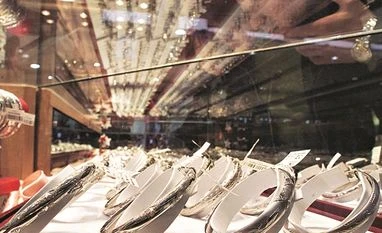Platinum closed above the $1,300-per ounce mark on February 15 after a gap of more than six years. Its rally has outpaced gold over the past year.
Rising demand, disrupted supply
A key driver of the rally is the expected global economic recovery.
“Optimism regarding automobile and industrial demand has led to this price rise,” says Naveen Mathur, director of commodities and currencies, Anand Rathi Share & Stock Brokers. The auto industry is a major consumer of platinum, which it uses to produce autocatalytic converters.
China has implemented Phase VI emission standard from January 2021.
“Tougher pollution norms will lead to higher demand for platinum for use in catalytic converters,” says Ajay Kedia, director, Kedia Commodity Comtrade.
Platinum is also used in manufacturing hydrogen fuel cells, which are set to play a major part in emission-free transportation.
With gold becoming expensive, many consumers may shift to platinum jewellery.
Investment demand via platinum exchange-traded funds (ETFs) is on the upswing. ETF holdings rose to 3.9 million ounces at the end of January 2021, compared to 3.4 million a year earlier, according to the World Platinum Investment Council.
Supply issues have also contributed to the price spurt.
“Disruption at a key South African refinery, and shutting down of several mines due to the Covid-19 pandemic will keep the market in deficit this year as well,” says Mathur.
A weakening US dollar has also supported the rally. A faster-than-expected reinstatement in the supply of platinum or strengthening of the US dollar could act as headwinds for the rally.
Kedia believes platinum could touch $1,500 per ounce in a year.
High correlation with equity
A strong economic and industrial cycle is a positive for platinum. Those are also times when equities do well.
“Unlike gold, platinum performs well when equities are doing well,” says Vishal Dhawan, chief financial planner, PlanAhead Wealth Advisors.
He adds that any allocation made to platinum should be a part of the investor’s equity exposure.
Two investment options
In India, investors can buy jewellery and bars. Investing in the physical form means you have to take responsibility for storage and security. A making charge has to be paid (about 18-23 per cent of the price of platinum), which the jeweller deducts when you want to resell.
A platinum ETF listed on a foreign exchange is a better investment option. Many platforms nowadays give investors access to the US stock market.
“On the US exchanges, you have the Aberdeen Standard Physical Platinum Shares ETF and the GraniteShares Platinum Trust. The former is larger and is preferred,” says Dhawan.
Take the ETF route only if you are building an international portfolio with equity products also, since considerable costs are involved.
Limit exposure to 5 per cent of the overall portfolio.
“Avoid overexposure because this is a liquidity fuelled rally that is not unique to platinum,” says Dhawan.
Invest in a staggered manner with a 7-10-year horizon.
Taxation
For platinum held in a physical form, gains will be treated as long-term after three years, and as short-term if held for a shorter period.
“Long-term capital gain will be taxed at 20 per cent with indexation benefit, while short-term gain will be taxed at the individual’s slab rate,” says Archit Gupta, founder and chief executive officer, ClearTax.
In case of an ETF listed on a foreign exchange, the gains will be treated as long-term after 24 months. The tax rates for long- and short-term gains will be the same.













)
